Watering succulent plants is a crucial aspect of their care and maintenance. Succulents are known for their ability to store water in their leaves, stems, and roots, allowing them to survive in arid conditions. However, this does not mean that they can go without water indefinitely. Understanding the watering needs of succulents is essential for keeping them healthy and thriving.
Understanding the Watering Needs of Succulents
Succulents have adapted to survive in dry environments by storing water in their fleshy leaves, stems, and roots. This allows them to withstand periods of drought and thrive in arid conditions. However, it is important to note that succulents still require regular watering to stay healthy.
Several factors can affect the watering needs of succulents. Climate plays a significant role, as succulents in hot and dry climates will require more frequent watering compared to those in cooler and more humid environments. The size of the pot and the size of the plant also influence watering needs. Smaller pots and larger plants will dry out more quickly and may require more frequent watering.
The Importance of Proper Drainage for Succulent Plants
Proper drainage is crucial for succulent plants because they are highly susceptible to root rot. Succulents are adapted to survive in dry conditions, and their roots cannot tolerate sitting in water for extended periods. Without proper drainage, excess water can accumulate in the pot, leading to root rot and ultimately killing the plant.
To ensure proper drainage for your succulent pots, it is essential to use a well-draining soil mix. This typically consists of a combination of potting soil, perlite, and coarse sand or pumice. The soil mix should allow excess water to flow freely through the pot, preventing it from pooling around the roots.
How to Water Succulents: Tips and Tricks
There are several methods for watering succulents, and the best method will depend on the specific needs of your plants. One popular method is bottom watering, where the pot is placed in a tray of water and allowed to soak up moisture from the bottom. This ensures that the roots receive adequate water without risking overwatering.
Misting is another method that can be used to water succulents. This involves spraying a fine mist of water onto the leaves and stems of the plant. Misting is particularly useful for succulents with delicate leaves or those that are difficult to reach with a watering can.
When watering succulents, it is important to avoid common mistakes such as watering too frequently. Succulents are adapted to survive in dry conditions and can tolerate periods of drought. Overwatering can lead to root rot and other issues. It is best to allow the soil to dry out completely between waterings and then thoroughly saturate the soil when watering.
The Best Time to Water Your Succulent Plants
Timing is crucial when it comes to watering succulent plants. Watering at the right time can help prevent issues such as root rot and ensure that your plants receive the moisture they need to thrive.
The best time to water succulents is in the morning, allowing any excess moisture on the leaves and stems to evaporate throughout the day. This helps prevent fungal diseases and ensures that the plant has enough time to dry out before cooler evening temperatures set in.
It is also important to consider the season when determining the best time to water your succulent plants. In hot summer months, it may be necessary to water more frequently, while in cooler fall and winter months, less frequent watering may be required.
Overwatering vs. Underwatering Succulents: How to Avoid Both
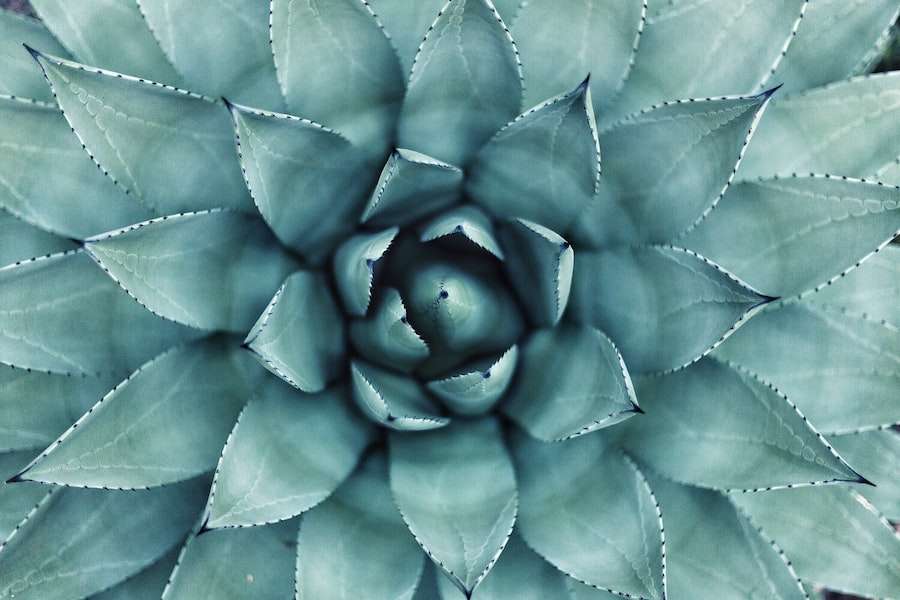
Both overwatering and underwatering can be detrimental to succulent plants. Overwatering can lead to root rot and other issues, while underwatering can cause the plant to become dehydrated and eventually die.
Signs of overwatering in succulent plants include yellowing or mushy leaves, a foul smell coming from the soil, and the presence of mold or fungus. On the other hand, signs of underwatering include shriveled leaves, a wilted appearance, and dry soil that pulls away from the sides of the pot.
To avoid both problems, it is important to strike a balance and water your succulents appropriately. Allow the soil to dry out completely between waterings and adjust your watering schedule based on the specific needs of your plants.
Choosing the Right Soil Mix for Your Succulent Plants
The soil mix you use for your succulent plants is crucial for their overall health and well-being. Succulents require a well-draining soil mix that allows excess water to flow freely through the pot.
A good succulent soil mix typically consists of potting soil, perlite, and coarse sand or pumice. The potting soil provides nutrients for the plants, while perlite and coarse sand or pumice help improve drainage. This combination ensures that excess water does not accumulate around the roots, preventing issues such as root rot.
When choosing a soil mix for your succulent plants, it is important to avoid heavy or compacted soils that retain moisture. These types of soils can lead to overwatering and root rot. Instead, opt for a light and airy soil mix that allows water to drain freely.
Watering Succulents in Different Seasons: Summer, Fall, Winter, and Spring
The watering needs of succulents can vary depending on the season. Understanding how seasonal changes affect watering requirements is essential for keeping your succulents healthy throughout the year.
In hot summer months, succulents may require more frequent watering due to increased evaporation and higher temperatures. It is important to monitor the soil moisture levels and adjust your watering schedule accordingly.
In cooler fall and winter months, succulents enter a period of dormancy and require less frequent watering. It is important to allow the soil to dry out completely between waterings to prevent issues such as root rot.
During the spring, succulents may experience a growth spurt and may require more frequent watering to support their growth. However, it is still important to avoid overwatering and allow the soil to dry out between waterings.
How to Water Succulent Cuttings and Propagated Plants
Watering newly propagated succulent plants is slightly different from watering established plants. Cuttings and propagated plants have underdeveloped root systems and are more susceptible to overwatering.
When watering succulent cuttings or propagated plants, it is important to use a gentle misting method or bottom watering to avoid disturbing the delicate roots. It is also crucial to allow the soil to dry out between waterings to prevent root rot.
Watering is particularly important for succulent cuttings as it helps promote root development. However, it is essential to strike a balance and avoid overwatering, as this can lead to rotting of the cutting.
Common Mistakes to Avoid When Watering Succulents
There are several common mistakes that people make when watering succulents. These mistakes can lead to issues such as overwatering, root rot, and plant death.
One common mistake is watering too frequently. Succulents are adapted to survive in dry conditions and can tolerate periods of drought. Overwatering can lead to root rot and other issues. It is best to allow the soil to dry out completely between waterings and then thoroughly saturate the soil when watering.
Another common mistake is using heavy or compacted soils that retain moisture. Succulents require a well-draining soil mix that allows excess water to flow freely through the pot. Using heavy soils can lead to overwatering and root rot.
The Benefits of Using a Watering Schedule for Your Succulent Plants
Using a watering schedule can be highly beneficial for succulent plants. A watering schedule helps ensure that your plants receive the right amount of water at the right time, preventing issues such as overwatering or underwatering.
A watering schedule also helps establish a routine and makes it easier to remember when to water your succulents. Consistency is key when it comes to succulent care, and a watering schedule can help you stay on track.
To create a watering schedule, consider factors such as the climate, pot size, and plant size. Monitor the soil moisture levels and adjust your watering schedule as needed based on the specific needs of your plants.
Proper watering is essential for the health and well-being of succulent plants. Understanding their watering needs, ensuring proper drainage, and avoiding common mistakes are key to keeping your succulents thriving.
By following the tips and tricks outlined in this article, you can create a successful watering routine for your succulent plants. Remember to consider factors such as climate, pot size, and plant size when determining the best watering schedule for your plants.
With proper care and attention, your succulents will continue to thrive and bring beauty to your home or garden.
If you’re a succulent lover, you may have wondered what happens to your succulents after they flower. Do succulents die after flowering? Find out the truth about post-bloom care in this informative article from GirlsGist. Understanding how to care for your succulents after they bloom is essential for their long-term health and vitality. Discover the best practices and tips for keeping your succulents thriving even after they’ve bloomed. Read more
FAQs
What are succulents?
Succulents are plants that store water in their leaves, stems, and roots. They are known for their ability to survive in dry and arid conditions.
How often should I water my succulents?
Succulents should be watered only when the soil is completely dry. This can range from once a week to once a month, depending on the climate and the type of succulent.
What is the best way to water succulents?
The best way to water succulents is to thoroughly soak the soil and then allow it to dry out completely before watering again. It is important to avoid getting water on the leaves or in the center of the plant, as this can lead to rot.
Can I use tap water to water my succulents?
Tap water can be used to water succulents, but it is important to let it sit out for 24 hours before using it. This allows any chlorine or other chemicals to evaporate, which can be harmful to the plants.
What is the best time of day to water succulents?
The best time of day to water succulents is in the morning, when the temperature is cooler and the sun is not as strong. This allows the water to soak into the soil before it evaporates.
What should I do if my succulent is overwatered?
If a succulent is overwatered, it is important to remove it from the soil and let it dry out completely before replanting it in fresh, well-draining soil. It is also important to adjust the watering schedule to prevent future overwatering.








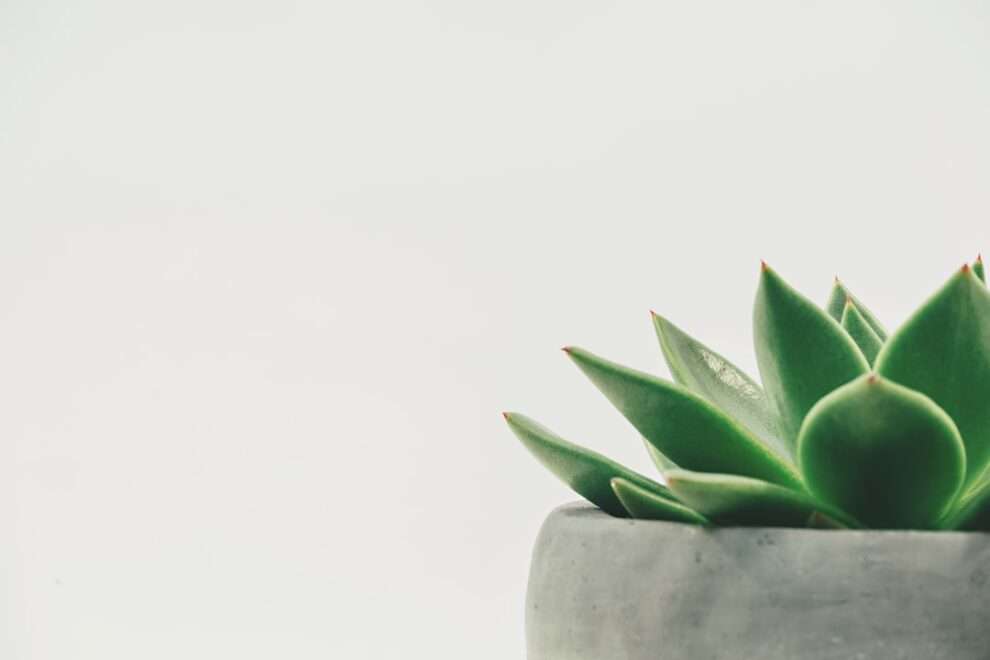
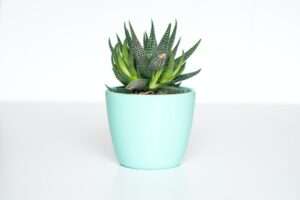
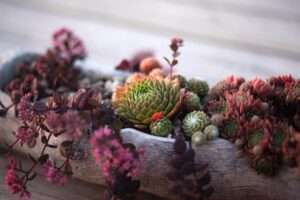



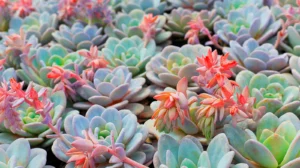
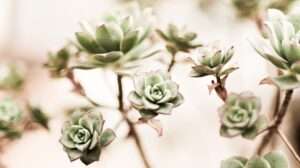

Add Comment